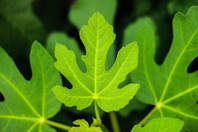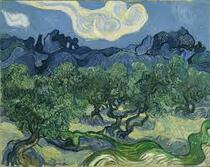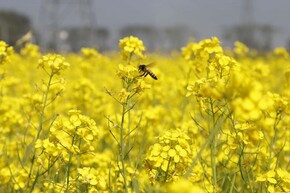God's Creations can be Puzzling
Plant Puzzle Week 6. Plants of the Bible Lands
This is the last week of this quiz.
We hope you have enjoyed your trip through the Bible lands
looking at the plants of the time.
The answers to each weeks Puzzles are at the end of each question. Scroll down to review.

- 1. What food source is this today? * Belongs to a clan of wild grasses called Triticeae, the seeds of which had a flavour that was pleasing to primitive people.
- * The early gatherers were also the first millers and selected grains that could be most easily released from their glumes or husks and prepared.
- * Early relatives had seed heads that were brittle and easily broken apart and the hulls clung to the grains. This made the seeds better for re-seeding but also difficult to thresh.
- * Every variety of this grain grown today has arisen from wild: fourteen-chromosome einkorn.
- * Bible references: Matthew 13: 24-30; 36-43.
- * The weed was probably Darnel, also referred to as tares.
- Wheat

- 2. What fruit is this?
* Many parts of the Bible Lands would have been uninhabitable without this tree. * The Hebrew word for this tree is ‘tamar’.
- * Exodus 15:27, Psalm 92:12, and various other Bible references.
- * There is archaeological evidence of its cultivation in Arabia from 600BC.
- * In 2005, a preserved 2000-year-old seed sprouted and in 2020 is 3.5m tall.
- *The ancient Hebrews made the fruit into wine, vinegar, bread, and cakes, also using the fruit stones to fatten livestock, and the wood to make utensils.
- * In Israel a syrup made from this fruit, termed silan, is used while cooking chicken and also for sweets and desserts, and as a honey substitute.
- * They are one of the ingredients of jallab, a Middle-Eastern fruit syrup.
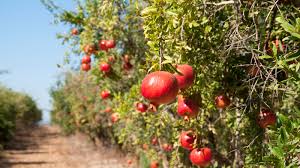
- 3. What fruit (botanically a berry) is this?
* A 5-10m shrub grows well in desert lands
- * Fruit is about the size of an orange.
- * The edible parts of the fruit are technically arils, not seeds.
- * An important source of food and medicine (for digestive disorders, skin disorders and intestinal parasites) for thousands of years, and the fruit of ancient myths (symbol of death and fertility).
- * Said to be found in the Garden of Eden according to Ancient Iranian Christianity.
- * Figure prominently in two places in the Scriptures: the garment of the high priest and in Solomon's temple - there were two hundred of these engraved on the capitals of the two pillars which were at the front of the temple.
- ----------------------------
Week 5
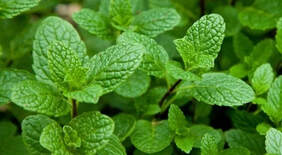
Week 4 Herbs native to the Bible Land
- 1. What is this herb and why was it important in Biblical times?
- Matthew 23:23; Luke 11:42
- *This plant is an antioxidant and is antimicrobial.
- * It was the basis of traditional or indigenous healing systems.
- * Still used widely in food and beverages.
- 1. Mint. Used for its healing and health benefits e.g. used to clean homes (especially after leprosy or death)
|
2. What plant is this? How did Jesus use this plant in His teaching? Matthew 13:31-33, 17:20 * Used widely today in sauces, pastes and dressings for food. * Planted for food since ancient times: the earliest reference is in India in 5th Century BC; * the Arabs boiled the seeds and used it in a drink with honey, or other ingredients; used in its seedling form i.e. the cress of the plant (can be harvested 7 days after planting). * Large bushes which little birds may even use to nest in. * As well as food, it was used in Bible lands for medicinal purposes, and edible oil, or oil for lighting. 2. Mustard. Jesus used its seed in a Parable. |

3. What plant is this? Exodus 16:31; Numbers 11:7
|
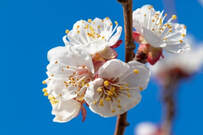
Week 3
What fruit tree are these the flowers of?
What fruit tree are these the flowers of?
- * The evidence is that this was the fruit tree in the Garden of Eden, which was the Tree of Knowledge of Good and Evil.
- * No specific name was ever given in Genesis to the forbidden fruit in the Garden of Eden.
- * This tree was native to the Bible lands
- * The apple tree is not native to the Bible lands, but in the 4th Century AD, interpreters referred to the forbidden fruit as ‘apple’, as ‘malus’ was the Latin word for ‘apple’ and ‘evil’.
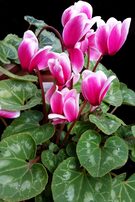
I am the Cyclamin |

What plant is this? (Luke 15:16)
|

Week 2
What is the common name of this tree? * A tall native tree which grows in mountain areas in the Eastern Mediterranean basin.
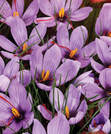
Week 2
What very expensive spice is sourced from this plant?
|
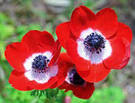
Week 2
To which plant species does this flower belong? What is its common name? * Most likely what was referred to by Jesus as ‘lilies of the field’ in His sermon on the mount. (Matthew 5, 6 and 7)
|
